Let’s learn more about the animals living atop New Jersey’s tallest mountain. This article will take you on a fascinating journey through the diverse wildlife that thrives atop one of the most prominent peaks in the Garden State. Nestled in the heart of New Jersey, this majestic mountain range offers sanctuary to an array of extraordinary creatures. And each animal has its own unique characteristics and adaptations. From elusive predators to graceful grazers, join us as we unveil fourteen captivating animals that call this elevated landscape their home. Embark on this exciting adventure, and prepare to be amazed by nature’s wonders that await us high above ground level.
New Jerseys Tallest Mountain

Many animals thrive in and around High Point, New Jersey.
©Bruce Goerlitz Photo/Shutterstock.com
High Point, standing at an impressive height of 1,803 feet, proudly reigns as the tallest mountain in the beautiful state of New Jersey. Situated within the enchanting realms of High Point State Park, this majestic peak offers a breathtaking panorama. It awakens the soul and beckons adventurers to explore its captivating trails.
Nestled amidst the serenity of High Point State Park is an extraordinary wilderness known as Stokes State Forest. This area has lush greenery and vibrant flora. This vast expanse serves as a flourishing habitat for a myriad of fascinating creatures. Abundant wildlife thrives within these sprawling woodlands, where nature enthusiasts can revel in awe-inspiring encounters with some truly remarkable animals.
As you venture through this sanctuary of untamed beauty, keep your eyes peeled for the diverse array of wildlife that call Stokes State Forest home. Majestic white-tailed deer gracefully roam through sun-dappled clearings while elusive black bears tread silently along secluded paths. Squirrels playfully dart among towering trees, and agile foxes stealthily traverse their hunting grounds under cover of twilight.
14 Animals Atop New Jersey’s Tallest Mountain
Stokes State Forest and High Point State Park are home to an abundance of wildlife. Here are a few of our favorites!
Black Bear

New Jersey’s tallest mountain is home to black bears and other animals.
©Dolores M. Harvey/Shutterstock.com
The black bear is an iconic inhabitant of New Jersey’s tallest mountain. It boasts a diverse diet consisting of both plants and animals. These omnivorous creatures exhibit an array of behaviors, such as foraging, climbing trees with unmatched agility, and swimming proficiently. Bears seek solace in wooded areas or forested regions with abundant food sources like berries and acorns. Their preferred habitat encompasses dense forests providing ample cover.
Crucial to the ecosystem, black bears play a pivotal role in seed dispersal through consumption and subsequent defecation. They scavenge carrion left behind by other predators. They also aid in regulating prey populations while also serving as indicators of environmental health within this vibrant ecosystem.
Beaver
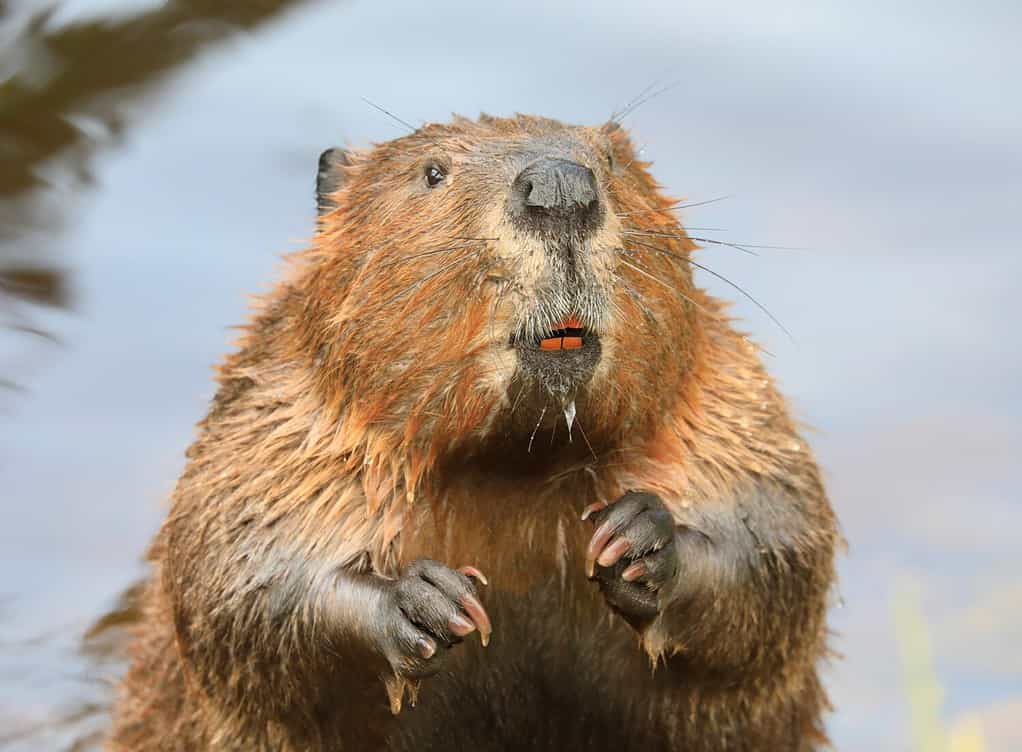
Beavers are crucial members of wetland ecosystems in New Jersey.
©Vlad G/Shutterstock.com
Beavers are large, semi-aquatic rodents known for their remarkable ability to shape and alter their environment. They have a stocky build, webbed hind feet, and a broad flat tail covered in scales. Beavers thrive in life both on land and in water.
In terms of diet, beavers predominantly feed on vegetation. Their herbivorous nature is evident as they primarily consume the bark and twigs of trees. Their favorites are willows, poplars, birches, and maples. They also have a preference for aquatic plants like water lilies and cattails. Beavers possess strong incisor teeth that continually grow throughout their lives which allow them to gnaw through woody material effortlessly.
When it comes to behavior, beavers have exceptional engineering skills. Beavers construct elaborate dams by felling trees using their powerful jaws and sharp incisors. These dams serve multiple purposes:
- Creating deep ponds or wetlands where they can build lodges or burrows.
- Providing protection against predators.
- Regulating water levels.
- Improving habitat quality for various other species.
- Even influencing local hydrology.
Beavers make their homes in bodies of freshwater such as rivers, streams, lakes, or ponds. They selectively choose sites with ample vegetation suitable for food sources. These areas also offer enough building materials for constructing dams or lodges. A dam is a structure created from mud-packed branches interwoven with grasses and leaves.
Otter
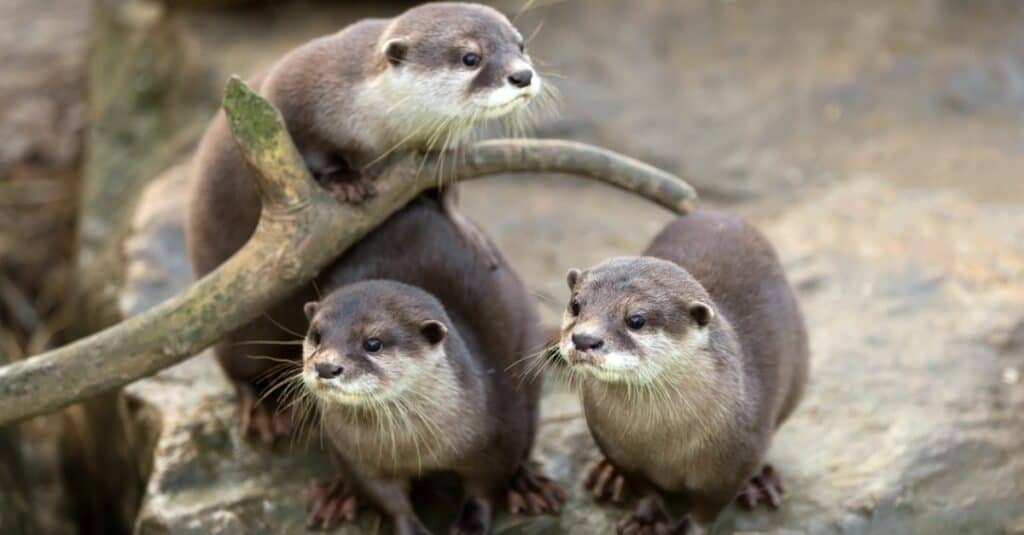
Stokes State Forest in New Jersey is home to otters and other water-loving animals.
©iStock.com/Artush
Otters, fascinating creatures that inhabit both land and water, are known for their playful nature and unique adaptations. These furry mammals belong to the Mustelidae family, which also includes weasels and badgers. Otters are semiaquatic mammals recognized for their sleek bodies, webbed feet, and dense fur.
In terms of diet, otters are primarily carnivorous animals. Their menu consists mainly of fish but can also include crustaceans such as crabs or crayfish. Otters have sharp teeth perfectly designed for grasping slippery prey underwater. They skillfully hunt by diving beneath the surface with incredible agility. Their exceptional swimming abilities allow them to effortlessly navigate through rivers, lakes, estuaries, and coastal areas in search of food.
Not only are these charismatic creatures excellent swimmers, but they also possess an intriguing behavior that captivates wildlife enthusiasts worldwide. Otters exhibit a strong sense of social interaction within their communities while maintaining individual territorial boundaries. These intelligent creatures communicate using a variety of vocalizations. They use whistles and chirps, along with physical displays like tail slapping on the water’s surface.
When it comes to habitat preference, otters thrive in diverse environments. These range from freshwater ecosystems like rivers and streams to marine habitats such as estuaries or coastal marshes. These territories are rich in aquatic resources essential for their survival needs. Abundant fish populations are one good example. Otters construct dens near shorelines or riverbanks where they rest during periods of activity lulls.
Great Blue Heron
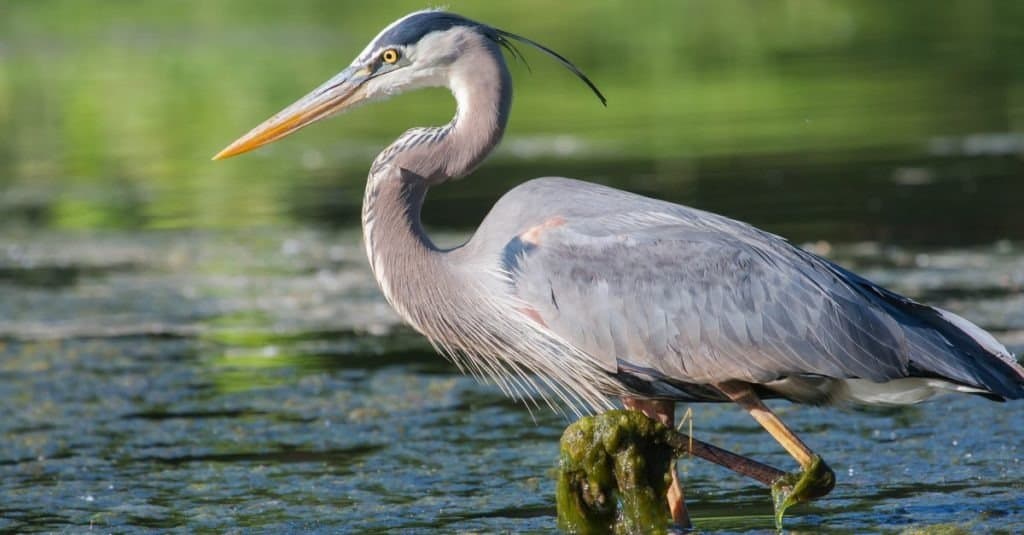
An area with great blue herons is a sign of a healthy ecosystem.
©Joseph Scott Photography/Shutterstock.com
The great blue heron, also known as Ardea herodias, is a majestic avian species that lives in abundance atop New Jersey’s tallest mountain. With its striking appearance and impressive wingspan of up to six feet, the great blue heron stands tall as one of nature’s most elegant creatures.
In terms of diet, these magnificent birds are primarily carnivorous. Their meals consist mainly of fish, amphibians, small mammals, and even insects. With their sharp beaks and lightning-fast reflexes, they skillfully capture their prey both in shallow waters and on land.
Behaviorally, the great blue herons exhibit fascinating traits. They are solitary animals for most of the year but often gather in large colonies during the breeding season for nesting purposes. These nests are typically built high above ground level within trees or shrubs near bodies of water such as lakes or marshes.
Habitat-wise, these graceful birds prefer wetland environments like swamps or coastal areas with abundant vegetation and ample food sources nearby. Being adaptable creatures allows them to thrive in various habitats across New Jersey’s diverse landscape.
Great blue herons play a crucial role in maintaining ecological balance within their ecosystems. As top predators within their food chains, they help control populations of smaller aquatic organisms by regulating prey numbers through predation activities. Additionally, their droppings enrich soil fertility around nesting sites while providing nutrients for plants surrounding these areas.
Muskrat

The wetlands near New Jersey’s tallest mountain are home to muskrats, beavers, and otters.
©Anton MirMar/Shutterstock.com
The muskrat, commonly known as Ondatra zibethicus, is a semi-aquatic rodent that inhabits various wetland habitats across North America, including the majestic New Jersey’s tallest mountain. With an average length of about 16-25 inches and a distinctive flattened tail, these small mammals are well-adapted to their aquatic lifestyle.
Muskrats have an omnivorous diet that primarily consists of vegetation such as cattails, water lilies, and other aquatic plants. However, they also consume small invertebrates like snails and clams when available. Their ability to gnaw through tough plant material allows them to shape their environment by constructing complex lodges made from mud and vegetation.
Renowned for their engineering prowess, muskrats create network-like systems of burrows within marshes or riverbanks. These burrows provide shelter not only for themselves but also for numerous other species seeking refuge from predators or extreme weather conditions.
These industrious creatures play a vital role in the ecosystem by shaping wetland habitats through their feeding habits and construction activities. They contribute to nutrient cycling by consuming vegetation and redistributing nutrients throughout the ecosystem via excretion.
Raccoon
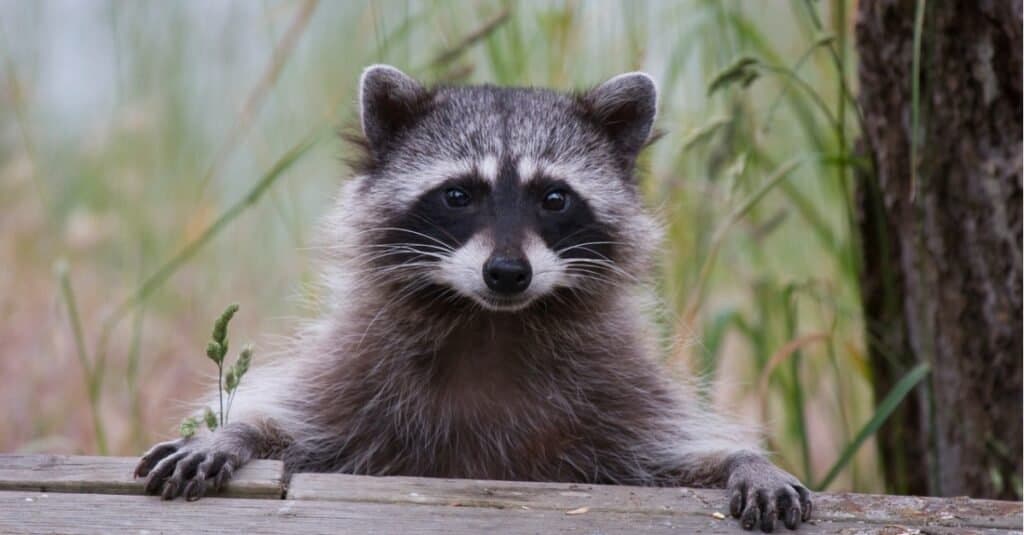
Raccoons are intelligent animals that are also one of the ultimate scavengers of the animal world.
©iStock.com/cullenphotos
Raccoons, known for their distinctive black mask and ringed tail, are highly adaptable creatures found throughout North America. These nimble mammals possess a varied diet, consisting of both plant matter and animal prey, such as insects, small mammals, and bird eggs. Their resourcefulness allows them to thrive in diverse habitats, including forests, wetlands, urban areas, and even mountaintops like New Jersey’s tallest summit.
Raccoons play an essential role within the ecosystem as seed dispersers and insect controllers. Consuming fruits and nuts while moving between locations, they aid in forest regeneration. Furthermore, their consumption of insects helps regulate pest populations naturally without the need for harmful chemicals or pesticides.
Mallard
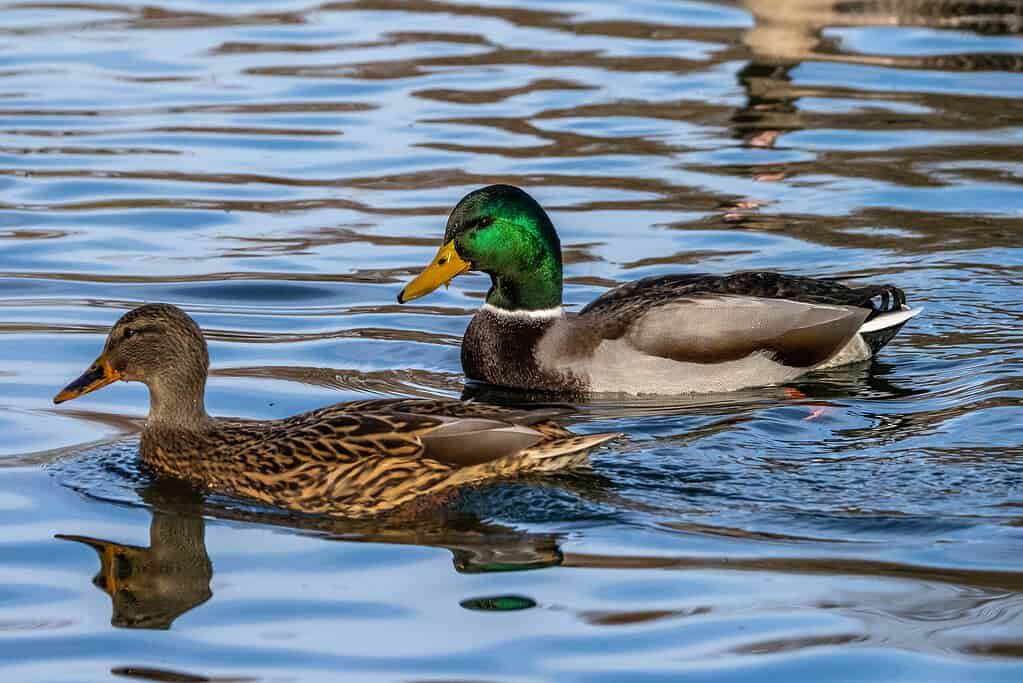
Mallard ducks (Anas platyrhynchos) help to spread seeds of important wetland grasses and reeds.
©iStock.com/Rudolf Ernst
The mallard, a common waterfowl species, is characterized by its vibrant plumage and distinctively curved bill. With an active lifestyle, these birds are omnivorous creatures that feed on a diverse diet comprising aquatic plants, insects, seeds, and small invertebrates.
Mallards can be found inhabiting a variety of wetland habitats, including ponds, marshes, and riverbanks. Their presence plays a crucial role in the ecosystem as they act as seed dispersers through their foraging activities. Additionally, the mallard’s nesting habits contribute to the maintenance of wetland biodiversity by providing safe havens for other bird species during breeding seasons.
Wood Duck
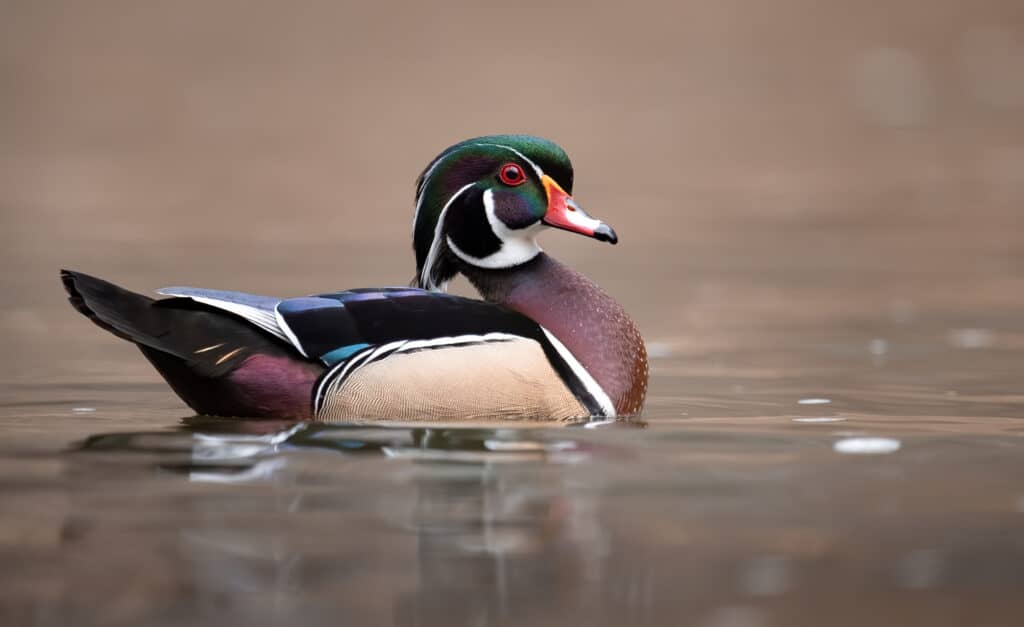
A wood duck can help spread many thousands of seeds throughout its lifetime.
©Harry Collins Photography/Shutterstock.com
The wood duck, a magnificent species found atop New Jersey’s tallest mountain, is truly captivating. Known for its vibrant and eye-catching plumage, this medium-sized waterfowl thrives on a diverse diet consisting of aquatic plants, fruits, seeds, insects, and small fish.
With agile flight patterns and excellent diving abilities, these ducks skillfully navigate their woodland habitats in search of food and suitable nesting sites near freshwater bodies. Their significance to the ecosystem cannot be overstated. Their feeding activities spread seeds and various organisms within wetland ecosystems. Wood ducks play a crucial role in maintaining the delicate balance of nature.
Black Duck

The three most common ducks to see in New Jersey are wood ducks, mallards, and black ducks (shown here).
©Paul Reeves Photography/Shutterstock.com
The black duck, an intriguing species found in New Jersey’s tallest mountain, possesses distinctive characteristics. This medium-sized waterfowl boasts a versatile diet that encompasses aquatic plants, insects, mollusks, and grains. With its active behavior, the black duck can be observed diving for food or engaging in complex courtship displays during the breeding season.
Its preferred habitat includes wetlands and freshwater marshes, where it nests and roosts among dense vegetation. Considered vital to the ecosystem, this remarkable bird contributes to seed dispersal while controlling insect populations through predation. The black duck’s presence on New Jersey’s highest peak exemplifies its adaptability and role in maintaining biodiversity within nature’s delicate balance.
Red-Tailed Hawk
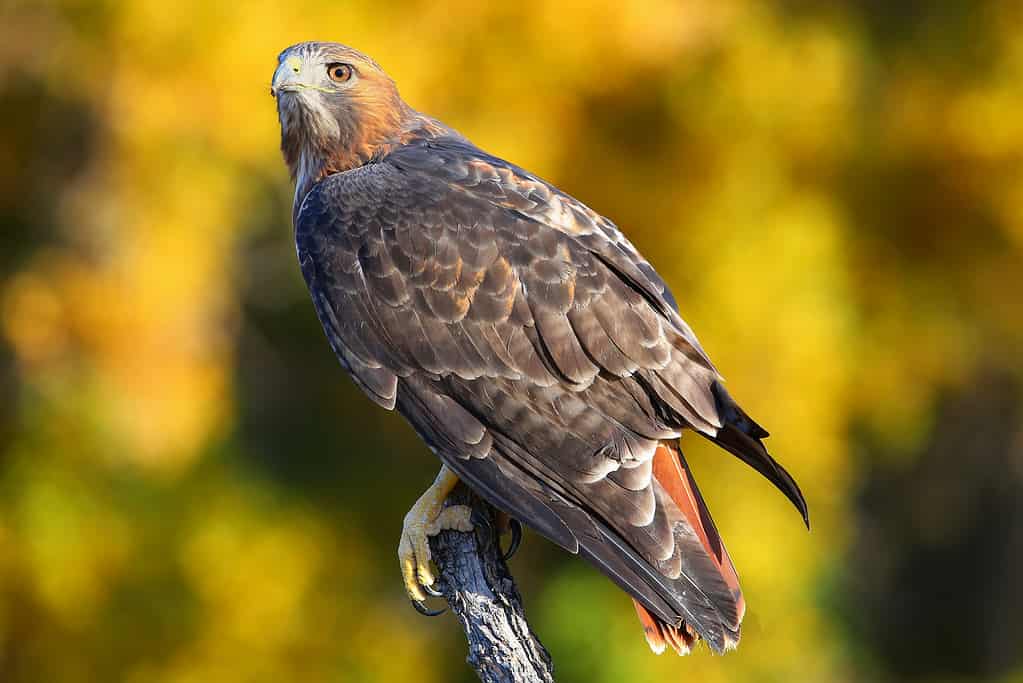
Red-tailed hawks are fierce predators in their home atop New Jersey’s tallest mountain.
©iStock.com/Donyanedomam
The red-tailed hawk, a majestic bird of prey found atop New Jersey’s tallest mountain, possesses unique characteristics. With a broad wingspan and rust-colored tail feathers, it is an impressive sight in flight.
This formidable predator sustains itself through a diverse diet consisting of small mammals, reptiles, and birds. Known for its exceptional hunting skills and keen eyesight, the red-tailed hawk plays a crucial role as an apex predator within the ecosystem.
Its habitat preference includes open fields and wooded areas near water sources where it can nest on tree branches or cliffs. Overall, this magnificent raptor significantly contributes to maintaining balance in the local wildlife community.
Timber Rattlesnake

Timber Rattlesnakes, Crotalus horridus, help keep rodent populations in check.
©Joe McDonald/Shutterstock.com
The timber rattlesnake, a venomous reptile native to New Jersey’s tallest mountain, is an intriguing species worth exploring. With its distinct rattle and impressive length, this snake possesses a unique place in the ecosystem. Their diet primarily consists of small mammals like mice and squirrels, making them essential predators for maintaining ecological balance.
Known for their stealthy behavior and excellent camouflage capabilities, timber rattlesnakes typically inhabit rocky areas with abundant vegetation nearby. This habitat choice allows them to hide from predators while still accessing prey opportunities. Crucially important to the ecosystem, these mesmerizing creatures play a vital role in controlling rodent populations and contributing to overall biodiversity within their environment.
Bobcat

Bobcats roam throughout Stokes Stake Forest in New Jersey.
©WhirlVFX – Pamela Werrell/Shutterstock.com
The bobcat, known scientifically as Lynx rufus, is a medium-sized wildcat native to North America. With its distinctive tufted ears and short tail, the bobcat is an elusive creature that roams across a wide range of habitats in New Jersey’s tallest mountain.
These solitary hunters have a diverse diet consisting of small mammals like rabbits and squirrels, but they also prey on birds and reptiles. As essential predators in their ecosystem, bobcats help regulate populations by controlling smaller animal numbers. Their presence signifies a healthy ecosystem and serves as an indicator of biodiversity within the region’s natural landscape.
Barred Owl

Barred owls are excellent hunters who help keep New Jersey’s rodent population in check.
©FotoRequest/Shutterstock.com
The barred owl, a fascinating species found atop New Jersey’s tallest mountain, boasts unique characteristics that make it truly captivating. With regards to diet, these owls are known for their diverse palate, which includes small mammals like mice and voles, as well as birds and amphibians.
In terms of behavior, they are renowned for their exceptional hunting skills under the cover of darkness. Their preferred habitats range from dense forests to swamps, where they can nest in tree cavities or even abandoned hawk nests. As vital contributors to the ecosystem, barred owls help control populations of prey species and maintain a balanced food web by acting as top predators within their environment.
Eastern Box Turtle
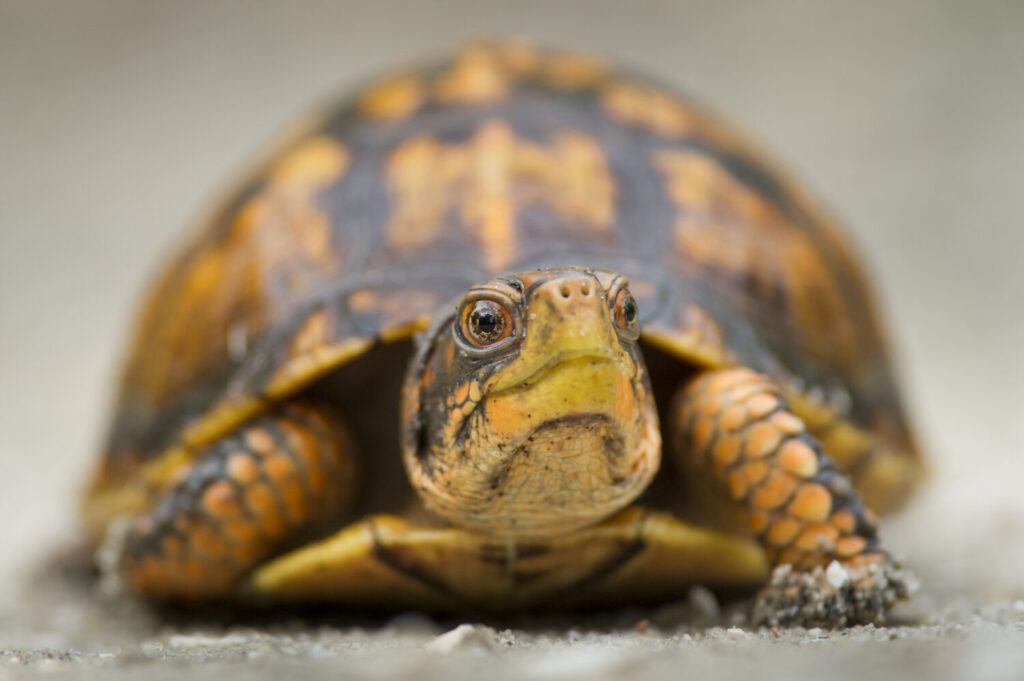
Eastern box turtles have important duties in their ecosystems near New Jersey’s tallest mountain.
©Ray Hennessy/Shutterstock.com
The Eastern box turtle, a fascinating reptile found in New Jersey’s tallest mountain, boasts distinctive characteristics and plays a vital role in the local ecosystem. With a domed shell that can range from brown to yellow or even black, these turtles are primarily omnivorous, feeding on an array of vegetation such as berries, mushrooms, insects, and sometimes carrion.
Known for their ability to retract completely within their shells when threatened, they exhibit cautious behavior and prefer habitats with ample cover, like woodlands and meadows. These remarkable creatures contribute to the ecosystem by dispersing seeds through their diet choices and helping control populations of small animals like slugs and worms.
.
The photo featured at the top of this post is © iStock.com/Verducci1
Thank you for reading! Have some feedback for us? Contact the AZ Animals editorial team.






